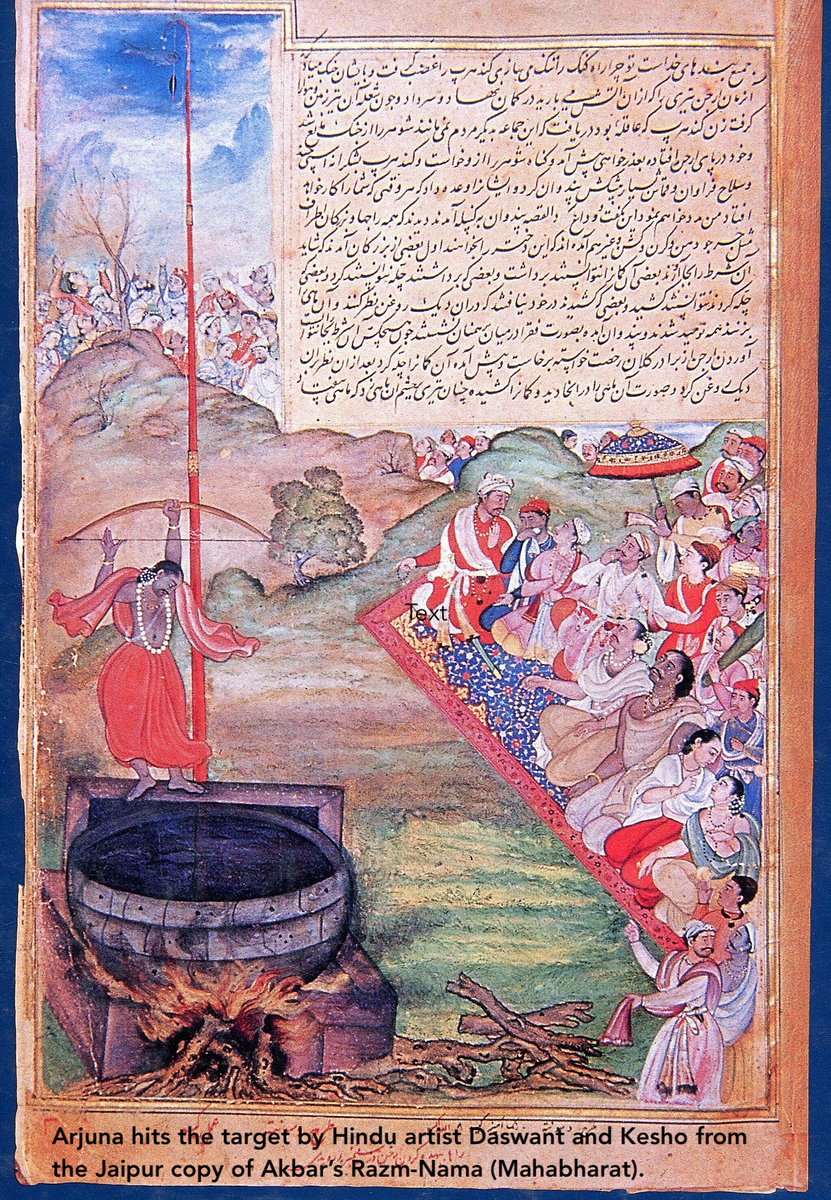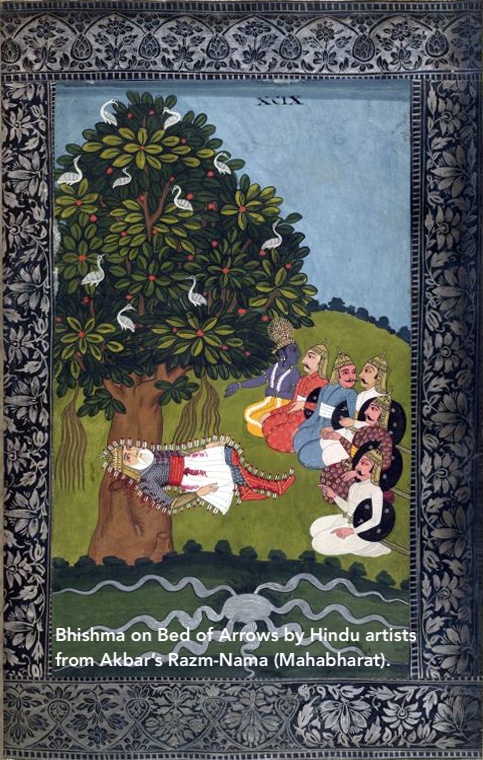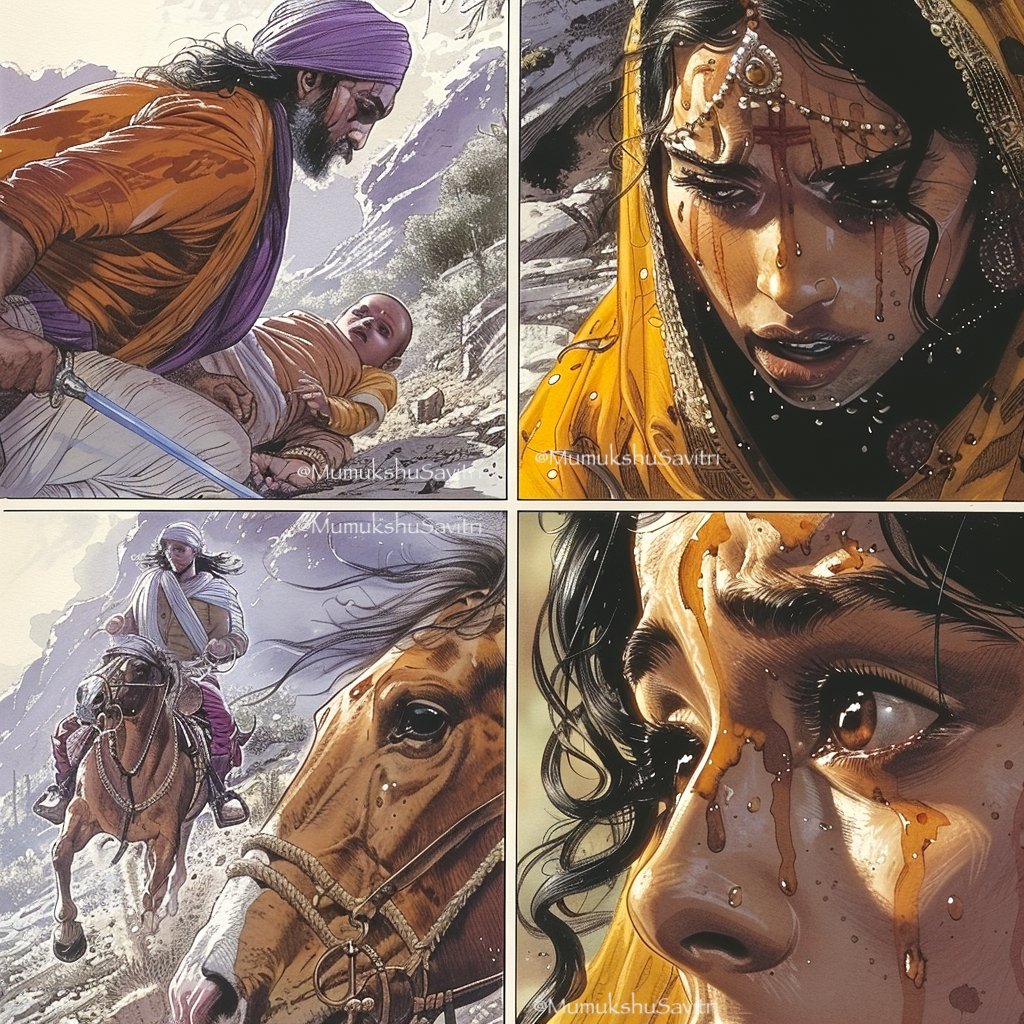
तुच्छ्येनाभ्वपिहितं यदासीत्तपसस्तन्महिनाजायतैकम् । Designer & Entrepreneur, Proud Hindu, Busting History myths, Wife & Mom, Writer, Culinary & AI Artist. No DMs
60 subscribers
How to get URL link on X (Twitter) App




 Even today in Braj, Bengal and Odisha, Holi is celebrated as Dol-Yatra/Poornima, the Swing Festival, where Krishna is ceremonially rocked back and forth on a swing (hindola). This Vaishnavite festival represents the sun as a form of Vishnu. The celestial swinging motion is not arbitrary though, it symbolizes the pendulum like oscillation of the Sun as it moves across the sky between the two solstices of Dakshinayana (Sun’s southern journey, leading to winter, shorter days, and darkness) and Uttarayana (Sun’s northern journey, leading to summer, longer warmer days, and vitality)
Even today in Braj, Bengal and Odisha, Holi is celebrated as Dol-Yatra/Poornima, the Swing Festival, where Krishna is ceremonially rocked back and forth on a swing (hindola). This Vaishnavite festival represents the sun as a form of Vishnu. The celestial swinging motion is not arbitrary though, it symbolizes the pendulum like oscillation of the Sun as it moves across the sky between the two solstices of Dakshinayana (Sun’s southern journey, leading to winter, shorter days, and darkness) and Uttarayana (Sun’s northern journey, leading to summer, longer warmer days, and vitality)





 2/10
2/10


 One of the earliest mentions of Madanmahotsava is found in Vatsyayana's Kamasutra (400 BCE). Clad in resplendent attire, men and women gathered in temples and royal courts at the advent of spring, seeking the blessings of divine couples for love and prosperity. Hemadri’s Vratakhanda (13th c.) recounts in detail the legendary tale of Kamadeva awakening Shiva from deep meditation to tempt him into union with Gauri. Furious at his Tapasya being disturbed, Shiva reduced him to ashes with a single fiery glance. Kamadeva's distraught wife, Rati begged and pleaded with Lord Shiva for his revival. Moved by Rati’s unwavering devotion and Gauri's persuasion, Shiva, in his boundless compassion, granted that Kamadeva would once again regain his physical form every year on the 13th day of the bright half of the spring month. Thus, the annual festival of Madanamahotsava was born - enshrining the triumph of love and renewal.
One of the earliest mentions of Madanmahotsava is found in Vatsyayana's Kamasutra (400 BCE). Clad in resplendent attire, men and women gathered in temples and royal courts at the advent of spring, seeking the blessings of divine couples for love and prosperity. Hemadri’s Vratakhanda (13th c.) recounts in detail the legendary tale of Kamadeva awakening Shiva from deep meditation to tempt him into union with Gauri. Furious at his Tapasya being disturbed, Shiva reduced him to ashes with a single fiery glance. Kamadeva's distraught wife, Rati begged and pleaded with Lord Shiva for his revival. Moved by Rati’s unwavering devotion and Gauri's persuasion, Shiva, in his boundless compassion, granted that Kamadeva would once again regain his physical form every year on the 13th day of the bright half of the spring month. Thus, the annual festival of Madanamahotsava was born - enshrining the triumph of love and renewal.





 2/10
2/10




 2/7
2/7






 Claim # 2: Buddha was not a descendant of Ram because Ram never existed in reality.
Claim # 2: Buddha was not a descendant of Ram because Ram never existed in reality.






 The next Mughal, Babur, practically salivated with delight at the prospect of killing Hindus & scattering them like “teased wool & broken bubbles on wine”. He built several Minars out of Hindu heads, during battles in the Doab, near Agra & Chanderi to name a few. So overjoyed was Babur with his bloody crimes that he waxed eloquent poetry about killing Kafirs in praise of God. After creating Minars out of their heads, he proudly declared himself a “Ghazi” as his official imperial title - a term which means “Victorious over the enemies of Islam”
The next Mughal, Babur, practically salivated with delight at the prospect of killing Hindus & scattering them like “teased wool & broken bubbles on wine”. He built several Minars out of Hindu heads, during battles in the Doab, near Agra & Chanderi to name a few. So overjoyed was Babur with his bloody crimes that he waxed eloquent poetry about killing Kafirs in praise of God. After creating Minars out of their heads, he proudly declared himself a “Ghazi” as his official imperial title - a term which means “Victorious over the enemies of Islam”





 2
2



 वन्दे वाञ्छितलाभाय चन्द्रार्ध कृतशेखराम् ।
वन्दे वाञ्छितलाभाय चन्द्रार्ध कृतशेखराम् ।




 Two other drawings of hidden Murtis embedded within the walls of the chhota sona mosque are labelled as that of the Devi consorts of the gods, Brahmani & Bhawani. Creighton's drawing of Brahmani also closely resembles another 9th c. Pala era sculpture of Brahmani. He also describes the image as Shiva in the form of Bhawani. It is an unusual & interesting depiction showing the deity riding atop a lion which is crushing a demon that is supported by an elephant. Creighton observed that the Murtis still had traces of being gilded with gold just like the roof of the structure, which is what gave the mosque the name of chhota sona mosque. The gilded golden roof must have made the temple an extremely attractive target for destruction to the Islamic attackers.
Two other drawings of hidden Murtis embedded within the walls of the chhota sona mosque are labelled as that of the Devi consorts of the gods, Brahmani & Bhawani. Creighton's drawing of Brahmani also closely resembles another 9th c. Pala era sculpture of Brahmani. He also describes the image as Shiva in the form of Bhawani. It is an unusual & interesting depiction showing the deity riding atop a lion which is crushing a demon that is supported by an elephant. Creighton observed that the Murtis still had traces of being gilded with gold just like the roof of the structure, which is what gave the mosque the name of chhota sona mosque. The gilded golden roof must have made the temple an extremely attractive target for destruction to the Islamic attackers.




 2/17
2/17 




 Now that Taranatha’s own passages have established that Brahmanas & Tirthikas were NOT the same, let’s see what the real role of Brahmanas was as described by Taranatha himself.
Now that Taranatha’s own passages have established that Brahmanas & Tirthikas were NOT the same, let’s see what the real role of Brahmanas was as described by Taranatha himself. 






 2000 Hindu Nāyars at Kuttippuram, Kerala were forcibly converted to Mohammadism by circumcision & compelled to eat beef by Tipu. Similarly 1000s of Hindus of Kittoor were forcibly circumcised leading to 2000 Brahmin suicides. Every Hindu house in Palghat was forcibly converted.
2000 Hindu Nāyars at Kuttippuram, Kerala were forcibly converted to Mohammadism by circumcision & compelled to eat beef by Tipu. Similarly 1000s of Hindus of Kittoor were forcibly circumcised leading to 2000 Brahmin suicides. Every Hindu house in Palghat was forcibly converted. 



https://twitter.com/AKanisetti/status/1600852763692642304



 Everywhere in the "mosque", broken ruins of Hindu & Jain temples lie scattered like garbage. Muslims deliberately wanted to show contempt for Hindu symbols this way. The name "Quwwat ul Islam" itself means "Might of Islam" - clearly indicating it was built to trample over Hindus
Everywhere in the "mosque", broken ruins of Hindu & Jain temples lie scattered like garbage. Muslims deliberately wanted to show contempt for Hindu symbols this way. The name "Quwwat ul Islam" itself means "Might of Islam" - clearly indicating it was built to trample over Hindus 




https://twitter.com/kamaalrkhan/status/1792205950058991775A record of exact statistics on Mughal money sent to Mecca begins with Akbar in 1576 who sent Rs. 600,000 with costly gifts like 12,000 dresses of honor & extra cash for constructing a Khanqah. The average salary for a normal Indian at this time was just 3 rupees per month!



 The letter titled "A Letter on the Prospects of Christianity & the means of promoting its reception in India" was a reply to Unitarian Christian preacher Rev. Henry Ware of Harvard who sent him a list of questions to work out a strategy on how Hindus of India could be converted.
The letter titled "A Letter on the Prospects of Christianity & the means of promoting its reception in India" was a reply to Unitarian Christian preacher Rev. Henry Ware of Harvard who sent him a list of questions to work out a strategy on how Hindus of India could be converted. 



 Artists like Baswan, Lal, Daswanth, Kesu, Mukund, Haribans, Jagannath, etc. from castes like Kahar, Kayastha, Chitera, Silavat & Khati, show Hindus from all castes were the creators of the best "Mughal" miniature paintings, but the credit was given to Persians in Mughal courts.
Artists like Baswan, Lal, Daswanth, Kesu, Mukund, Haribans, Jagannath, etc. from castes like Kahar, Kayastha, Chitera, Silavat & Khati, show Hindus from all castes were the creators of the best "Mughal" miniature paintings, but the credit was given to Persians in Mughal courts. 



 A panicky Madhavi begged her brother Mohanlal to save her baby. Mohanlal immediately rode off, somehow managing to stop the horse & rescue the infant. Mohanlal, a Kashmiri Pandit, was shocked by Siraj’s action & left Murshidabad with his sister Madhavi & her baby for good.
A panicky Madhavi begged her brother Mohanlal to save her baby. Mohanlal immediately rode off, somehow managing to stop the horse & rescue the infant. Mohanlal, a Kashmiri Pandit, was shocked by Siraj’s action & left Murshidabad with his sister Madhavi & her baby for good. 


https://twitter.com/devduttmyth/status/1777531447118598164


 Also called Samvatsārambha-utsava it was when rituals of eating Neem, offering cool drinks, offering oil to Brahmans & women, reading omens, presenting gifts to scholars, listening to the almanac were all specified in Sanskrit texts Sāmrājyalakshmīpițhika & Jayasimhakalpadruma
Also called Samvatsārambha-utsava it was when rituals of eating Neem, offering cool drinks, offering oil to Brahmans & women, reading omens, presenting gifts to scholars, listening to the almanac were all specified in Sanskrit texts Sāmrājyalakshmīpițhika & Jayasimhakalpadruma 



 Over 90% of Muslims in India, Pakistan & Bangladesh follow the Hanafi school of Islamic law. Their most authoritative text is Al-Hidaya by Al-Marghinani (12th c.). Hidaya is the primary guide for Hanafi law in Sharia courts & several years of study are devoted to it in Madrasas.
Over 90% of Muslims in India, Pakistan & Bangladesh follow the Hanafi school of Islamic law. Their most authoritative text is Al-Hidaya by Al-Marghinani (12th c.). Hidaya is the primary guide for Hanafi law in Sharia courts & several years of study are devoted to it in Madrasas. 


https://twitter.com/WIONews/status/1772216866196602976


 Mughals who never identified as Indians but identified with Islamic Persian culture used the Gulab Pash - an elongated rose water vase with a perforated sprinkler. Akbar introduced the festival Ab-i-Pashan in Tir/July to his court, where Gulab Pash is used to sprinkle rose-water.
Mughals who never identified as Indians but identified with Islamic Persian culture used the Gulab Pash - an elongated rose water vase with a perforated sprinkler. Akbar introduced the festival Ab-i-Pashan in Tir/July to his court, where Gulab Pash is used to sprinkle rose-water. 

